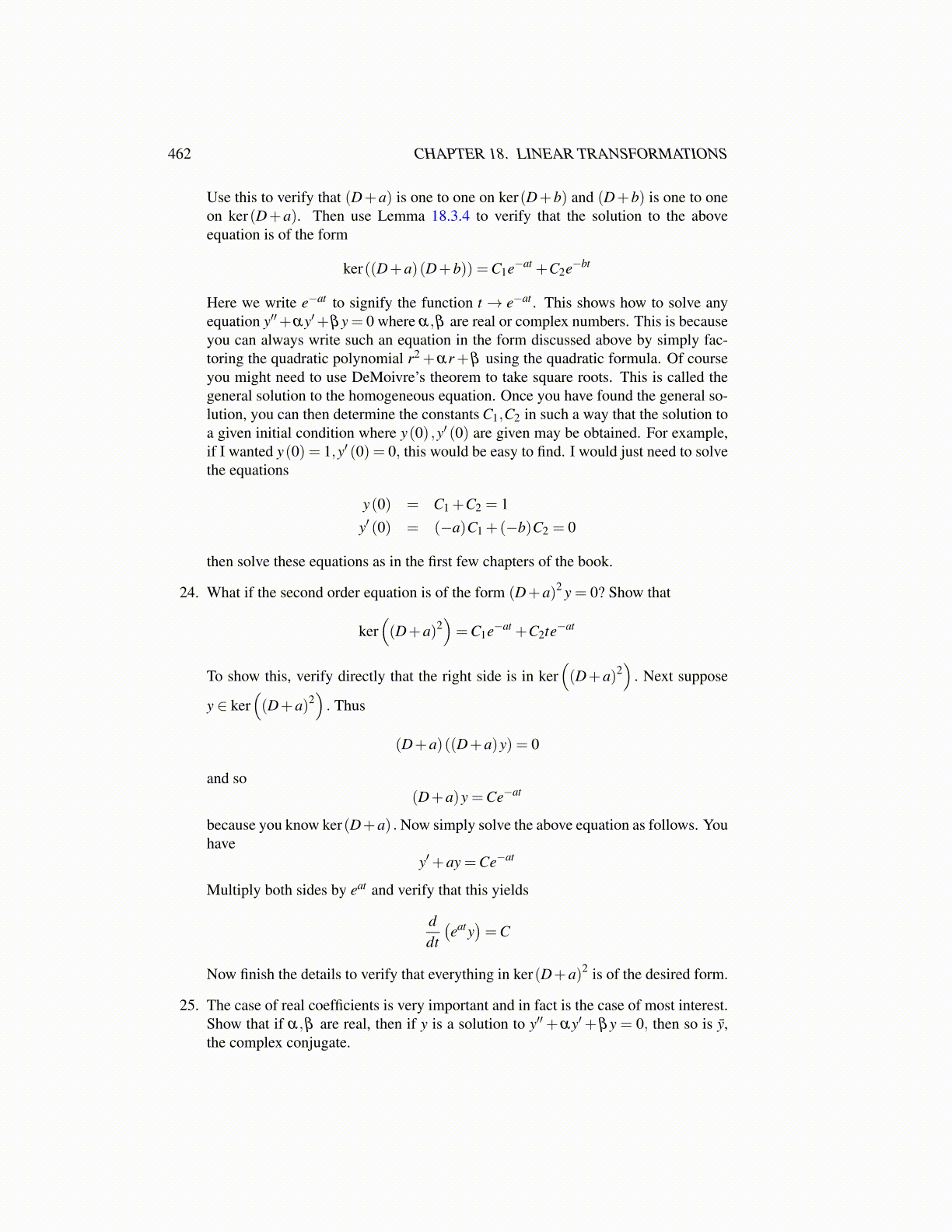
462 CHAPTER 18. LINEAR TRANSFORMATIONS
Use this to verify that (D+a) is one to one on ker(D+b) and (D+b) is one to oneon ker(D+a). Then use Lemma 18.3.4 to verify that the solution to the aboveequation is of the form
ker((D+a)(D+b)) =C1e−at +C2e−bt
Here we write e−at to signify the function t → e−at . This shows how to solve anyequation y′′+αy′+βy = 0 where α,β are real or complex numbers. This is becauseyou can always write such an equation in the form discussed above by simply fac-toring the quadratic polynomial r2 +αr+β using the quadratic formula. Of courseyou might need to use DeMoivre’s theorem to take square roots. This is called thegeneral solution to the homogeneous equation. Once you have found the general so-lution, you can then determine the constants C1,C2 in such a way that the solution toa given initial condition where y(0) ,y′ (0) are given may be obtained. For example,if I wanted y(0) = 1,y′ (0) = 0, this would be easy to find. I would just need to solvethe equations
y(0) = C1 +C2 = 1y′ (0) = (−a)C1 +(−b)C2 = 0
then solve these equations as in the first few chapters of the book.
24. What if the second order equation is of the form (D+a)2 y = 0? Show that
ker((D+a)2
)=C1e−at +C2te−at
To show this, verify directly that the right side is in ker((D+a)2
). Next suppose
y ∈ ker((D+a)2
). Thus
(D+a)((D+a)y) = 0
and so(D+a)y =Ce−at
because you know ker(D+a) . Now simply solve the above equation as follows. Youhave
y′+ay =Ce−at
Multiply both sides by eat and verify that this yields
ddt
(eaty)=C
Now finish the details to verify that everything in ker(D+a)2 is of the desired form.
25. The case of real coefficients is very important and in fact is the case of most interest.Show that if α,β are real, then if y is a solution to y′′+αy′+βy = 0, then so is ȳ,the complex conjugate.